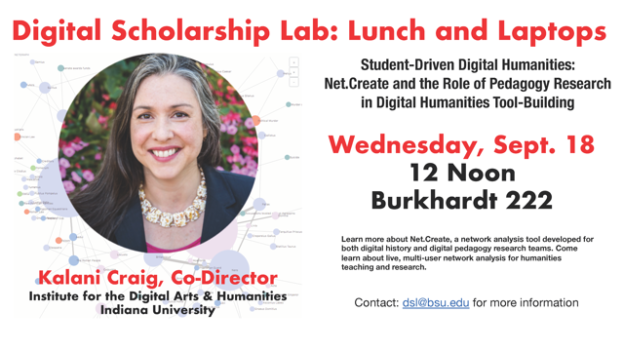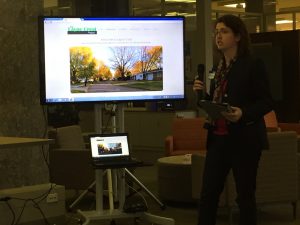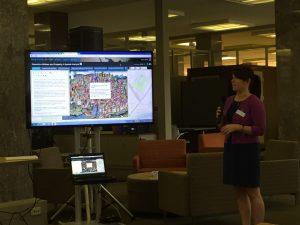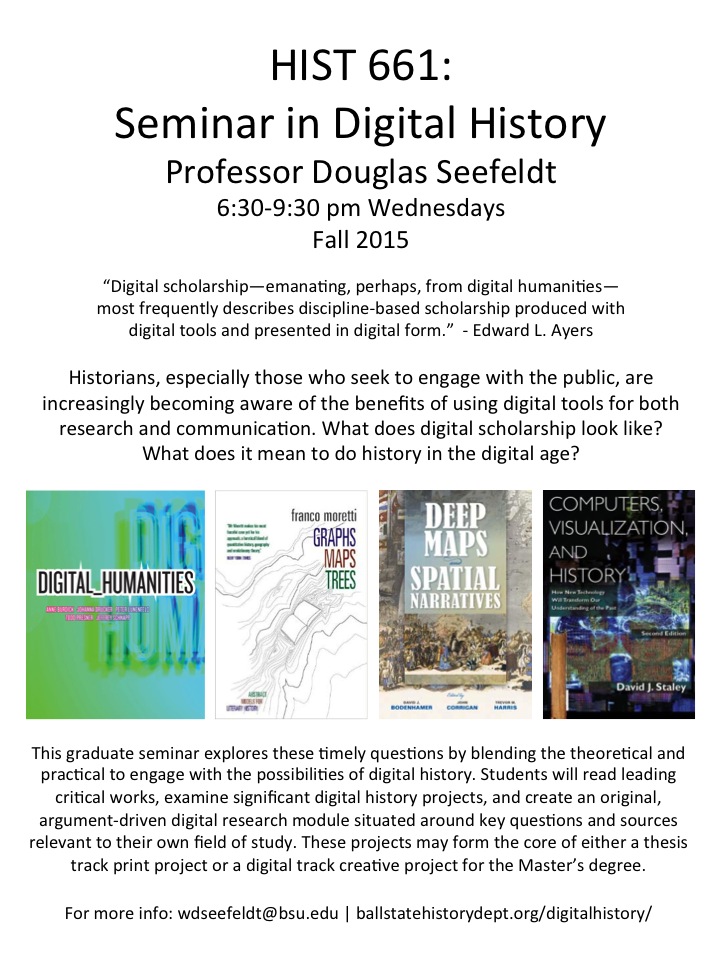Kalani Craig, Indiana University, “Student-Driven Digital Humanities: Net.Create and the Role of Pedagogy Research in Digital Humanities Tool-Building,” Wednesday, September 18, at 12:00 noon in Burkhardt 222.
Digital humanities scholars regularly incorporate practices from informatics, computer science, and data science as we build our research agendas and develop our tools. We then draw on these interdisciplinary research practices to shape our students’ classroom encounters with digital humanities, but how often do we systematically draw on student experiences to shape our research practice?
Kalani Craig, Co-Director of the Institute for Digital Arts and Humanities, will document the development and use of Net.Create, a network analysis tool developed for both digital-history and digital-pedagogy research teams. Her presentation will explore the effects of student learning outcomes on the network-theoretical and digital-history-methods principles for history research teams. Immediately following the talk, those in attendance can spend a few minutes with the Net.Create tool in a hands-on activity that demonstrates those principles in action.
Bring your lunch and your laptop (or tablet) to learn more about this innovative approach to live, multi-user network analysis for humanities teaching and research. The event is co-sponsored by the Ball State University Digital Scholarship Lab and the Department of History.



